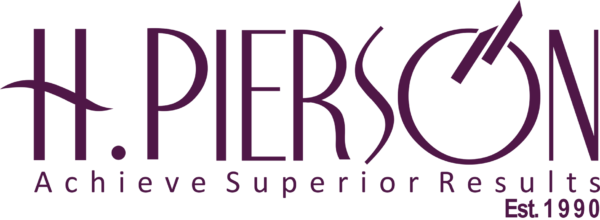April 5, 2024 Board
Companies’ strategies and operations are facing unprecedented change. Some companies, such as many technology companies and streaming service providers, have thrived in the past few months of upheaval, while companies in tourism and traditional retail are among those facing existential crises. Yet, no matter their financial position, almost every company has undergone a radical shift to virtual operations. Even companies that had nascent or stalled digital transformations have become significantly more tech enabled; this means everything from supporting remote working to finding entirely new market opportunities. Food and beverage brands are now selling directly to consumers, for example, and sectors from home improvement to medicine are innovating as fast as they can to meet both customer and employee expectations for convenience, speed, and safety in the form of low- or no-contact experiences and operations.
As leaders consider how to build on the digital gains they’ve made (however haphazardly) and assess how digital-first operations and the post-pandemic economic reality will affect their strategies, boards have a significant role to play in ensuring their organizations build a digital strategy that will support innovation and performance for the long term. Achieving this goal will require boards and executive teams to take a step back and truly reimagine the business and how it operates. Boards must also keep a close eye on the strategic risk from digital disruption. (For more on how companies can build on crisis-driven digital gains, see “Becoming a digital-first organization: Making the most of crisis-driven digital transformation.”)
To do all this, boards need to understand digital. Many, however, are still lagging in their digital expertise. There a few specific steps they can take to ensure they have the right level of knowledge, supportive governance processes and culture, and a digital orientation. Those that take the following steps will be best able to support the management team in resetting for a digital-first world.
1. Build digital expertise
Just as no board would consider recruiting a director who couldn’t read a balance sheet, boards should now consider basic digital literacy a qualifier to serve as a director. Without that foundation, directors can hardly be prepared to understand how digital drives—and should drive—the company’s overall purpose and operations or how it enhances the ability to understand and serve customers. Further, without a grasp of the basic digital lexicon and an appreciation of the vast array of issues and considerations digital embraces, directors lack the ability to translate what the management team is telling them or to engage on any meaningful level. This leaves them unprepared to meet challenges, ask the right questions, or provide relevant input.
Since most boards are currently lagging in digital expertise, most will need to make it a priority as they make the trade-offs among various considerations inherent in any board recruitment. (This is also true of other areas where boards face increasing expectations, such as sustainability and corporate reputation management.)
Finding such directors won’t necessarily be easy and may well require boards to modify their director-recruiting criteria to ensure they are looking in the right places. That typically means taking on traditional prerequisites such as CEO and prior board experience, since directors with digital skills often skew much younger than the typical director—probably in their 30s, compared with the mid-50s that is the average age of new directors around the world—and are unlikely to have C-suite experience.
However, adding one person with digital expertise is just a start. Boards with only one source of expertise on any topic run the risk of delegating everything relevant to that person, and that person runs the risk of being a lone voice unable to influence the broader agenda. In addition to seeking new directors, board leaders should focus on supporting current directors in acquiring sufficient digital knowledge, which most should be able to do. They can also make digital orientation part of onboarding for new directors who lack it. Further, boards should include on their digital knowledge agenda focused and structured immersion trips to other companies that are digital leaders; one leading company makes one board meeting in four a visit to another company it wants to learn from. Meetings with management teams are also an important part of director continuing education.
Gaining real digital value on the board will also take having one or more directors with deep digital expertise who can serve as stretch thinkers—people who can challenge their fellow directors and the management team on what is possible. These people need to be chosen carefully, however, because digital knowledge alone won’t make them effective in such a role. They also need a clear understanding of the board’s role and responsibilities and to be able to work with other directors to take a holistic view of all the board has to tackle.
Any digital expert on the board should also be able to work patiently and steadily as an influencer with both the board and management. With the board, this individual can nudge fellow directors toward the future, helping them imagine and reimagine what alternative futures for the company could look like and how to get there. With management, this director should be able to work behind the scenes—with the cooperation of the CEO—listening, learning, and making recommendations management will ideally adopt as their own. This kind of influencing works best, in our experience, when a director can plant the seeds of ideas, building awareness and ownership while intuitively understanding what the organization can absorb at any given time and not pushing too hard.
2. Establish a digital orientation
To be effective, boards need to be aligned on their overall purpose, asking and answering fundamental questions: Why does this company and board exist? Who are our key stakeholders? How can we best serve their interests? Similarly, to be effective digital leaders, boards must make sure the company has a clear digital ambition and purpose and that directors are aligned on it as well, understanding how digital transformation will affect every element of the organization and help it better deliver on its purpose. (For more on aligning your board on overall purpose, see Future-Proofing Your Board.)
The goal should be for discussion of digital innovation to be an integral, crucial element of driving impact in the core business rather than a stand-alone topic on the board’s annual agenda. Boards should ensure that digital considerations are woven into both strategy and its implementation, and that the digital strategy sets immediate and longer-term priorities that go well beyond one-off initiatives or the more recent, jury-rigged changes driven by the pandemic.
For that to happen, the board will have had to embrace digital—meeting online, hiring new board members virtually, and making the most of the communication tools and norms (such as more frequent and more informal discussions) that have become standard in recent months.
And, as with any area in which a board wants to assess its own performance, it should set some metrics and regularly track progress against them. Metrics could include the share of directors with specific digital expertise, the amount of time spent discussing the digital strategy, the frequency of meetings with digital and innovation executive leaders, or market share gains from digital innovation, among many others.
3. Innovate governance to ensure the board can get up to speed
Directors with digital expertise are in ever-increasing demand. Previously, companies may have had the luxury of waiting a year or two to add a new director when a regular board vacancy opened up. But now, the acceleration of digital change created by the pandemic means that waiting will almost certainly put companies behind competitors. Boards that can’t recruit digital experts in the near term can compensate by establishing an advisory board or even temporarily increasing the board’s size if they can’t wait for directors to drop off.
4. Support a digital culture
Boards determined to lead the way on digital transformation need to foster a culture that rewards innovation and change and doesn’t penalize failure. That starts with supporting the longer-term thinking required to place bets on huge investments that may not pay off for years. For digital, much like sustainability and diversity, it is the board’s job to see that proper actions are taken in the long-term interest of the company. The board should have a plan for communicating the change story to shareholders—and know how to stand its ground when necessary—explaining why, for example, a long-term investment may be a better bet than seeking immediate dividends. At the same time, boards must support management in not losing sight of immediate strategic and tactical needs, ensuring that digital transformation is part of ongoing operations, not separate from or opposed to them.
A digitally savvy board can also set the overall tone for culture change and model expectations going forward. Something as seemingly small as asking informed questions and explanations from management presenting at board meetings—in essence demonstrating that directors don’t have all the answers—speaks volumes when trying to nurture an innovative culture.
There are also digital considerations in boards’ oversight responsibilities—for example, determining whether there is sufficient talent, at every level, to make what may be a seismic shift. Most organizations have a head start from their generally successful transformations through the pandemic and can build on those. In addition, to make sure the positive changes stick, boards will want to monitor executive compensation to determine whether proper incentives are in place to motivate executives to take appropriate risk as they seek to discover new and better ways of doing things, enabling them to keep up with or, better yet, anticipate change.
Source: heidrick.com













